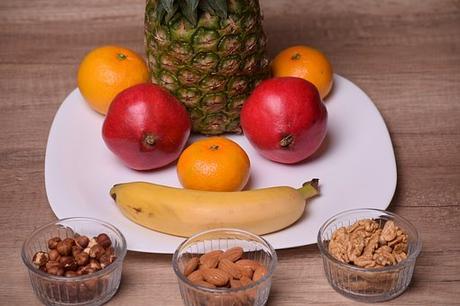Many people who are just starting out on their fitness journey are faced with this dilemma: bulk or cut? There are so many articles on the Internet giving a hundred different pieces of advice to people. When you are a beginner, it becomes really hard to choose and decide for yourself what is best for you. This is especially a concern when you are not training under professional supervision.
What is Bulking?

If you are exercising with a personal trainer or in a gym program, then your life is sorted. But for the confused fraction of my readers, it is important to first know what the two terms actually imply.
Bulking, as the word implies, means to gain weight. By weight, I mean both fat and muscle. Yes, it is a pure myth that bulking only makes you gain muscle and so it is different from weight gain. In essence, bulking is just a fancier word for “weight-gain”. However, there IS a slight difference between straightforward weight gain and bulking.
What is the difference between weight gain and bulking?
Weight gain is, well, easy. All you have to do is sit comfortably on your couch, binge-watch Netflix, and nosh on Doritos, donuts, pizzas, and all other kinds of junk humans are fond of.
Bulking, on the other hand, is a more structured and disciplined way of gaining weight, where your prime motive is to gain muscle, not put on weight. When you bulk, you are still training consistently and eating healthy. The only change you make is to eat in a caloric surplus.
When you are eating in a caloric surplus, it is obvious that you are giving your body more fuel than it needs. And what does our body do with the extras? Store them as fat. Hence, you gain fat. But you also gain muscle because you are training while also providing your body with a more than adequate amount of protein.
How exactly does a person bulk?

Okay, this is tough. One can misunderstand the terms “caloric surplus” and go on a food rampage devouring whatever comes their way. That is NOT the right way to bulk. Like I said before, bulking is a structured and disciplined way of gaining weight. You cannot let yourself go even on a bulk. Muscle gain is the prime motive here, so you need to make sure your body gets a good amount of protein from all the extra calories that you’re eating.
Here is a very simple guide on how to bulk:
- Calculate your BMR (including your exercise intensity), and add around 500-600 calories to that number. This is the new amount of calories you will be consuming on a bulk. You can customize this number depending on how much muscle you want to gain and how much faster.
- Don’t forget the protein. The extra calories are a great way for you to pile up on your protein. Use them in the best way possible. You can still chow down on your donuts and pizzas, but do not get off track and forget your real goal.
- Do not slack off on your exercise regime. You cannot gain muscle if you aren’t putting them through stress, even if you are eating the perfect bodybuilding diet. Bulking only changes the number of calories you eat, not the rest of your health regime.
- Muscle gaining is a slow process, especially for women. Also, no matter how hard you try, you WILL gain some fat. An average man will gain 1.5-2 pounds a month, while a woman will gain 1-1.2 pounds of pure muscle a month. So let’s say you want to gain 5 pounds of muscle. This will take you 4-5 months, which is a long time. And in all this time, with your caloric surplus, it is impossible for you not to put on some flab. Its natural, so don’t let it bother you.
Now let’s come to the second side of the coin- cutting.
What is cutting?

Cutting is the exact opposite of bulking, and similar to old-school dieting. It means, losing weight. By weight, I mean fat. Yes, it is possible to lose ONLY fat (and negligible muscle) if you “cut” the right way. However, there is again a difference between dieting and cutting.
What is the difference between weight loss and cutting?
People lose weight by simply eating less than they need. If you are on a diet that lowers your caloric intake so that you eat in a deficit, you will lose weight. The lesser you eat, the more weight you will lose, and you will lose it faster. But you don’t just lose fat, you also lose muscle. If you don’t want to lose muscle and end up looking skinny fat, cutting is the strategy you are looking for.
Cutting, again, is a structured and disciplined way of eating. While cutting, you do not change your fitness regime. All you do is eat in a deficit while ensuring that your macros are still fulfilled. You eat clean, you eat enough protein and good fats, and you work out, but you eat in a deficit. This way, you retain muscle, but shed the extra fat to expose a lean, toned body. Trust me, it is way more difficult than it sounds. But when does anything good ever come easy?
How does a person “cut”?
Cutting does NOT mean yo-yo dieting. Even on a cut, you need to eat enough so that your body gets the fuel it needs. However, the number of calories will be a tad bit less than the number you generally eat to maintain your weight. Also, the source of calories will be clean protein, good fats, and complex carbs.
Here is a simple guide to “cutting”:
- You don’t want to starve or feel weak on a cut, because you still need the energy to fuel your workouts. This means that your weight loss process will be slow and sustainable. To ensure this, do not create a deficit of more than 400-500 calories in your diet.
- Ensure that you get enough protein. A good rule of thumb is to have around 0.8 gms of protein per pound of your weight. Bear in mind that less than 0.5 gms is too less, while more than 1 gms is too much.
- Do not starve yourself at any cost just because you aren’t seeing results. Getting shredded and lean is a slow and steady process, but once it ends, you will be amazed at what your body was hiding underneath all that fat.
- Try introducing a few “higher calorie” days in your regime. These days will be your cheat days, but you won’t be going overboard on them either. You can either eat maintenance calories on these days, or 200-300 calories more than that. Two rules- eat clean, eat enough protein.
If you have followed my guide to the T, within 3-4 months, you will start loving your mirror.
Which is better and why?
There is no right answer to this question. It completely depends on what you want your body to look and feel like. If you want to look like Dwayne Johnson, by all means go for a bulk. If you want to look like a Victorias Secret model, go for a cut.
Going on a cut will make you leaner, and help you shed fat. A bulk, on the other hand, will help you build muscle. A lot of people go on a bulk first to build muscle, then start cutting to reveal that muscle and shed the extra fat. It is a pretty good strategy for most, but again it depends on your current body composition, and your personal choice.
It is recommended for people with a high body fat percentage (even if they are at a healthy weight), to go on a cut first, and shed the fat. Since you will be working out, you will retain the muscle you currently have and also shed fat. Once you have a relatively low body fat percentage, you can bulk to build some muscle, then later go back to normal eating (or another cut) to show off your new muscle.
The Final Takeaway
Body aesthetics are a very subjective thing. Everyone wants a different thing for their body. Some women love being skinny, some women like being curvy. Men like being big and muscley, or look like a shredded Greek God. It all comes down to what YOU want your body to look like. No path is wrong for you. Just keep in mind your current health, body fat percentage, and your final goal. And I’ll suggest that before you start thinking about bulking or cutting, make sure you’re truly committed to your fitness regime. If you are not working out the right way, then you shouldn’t even be reading this article.


